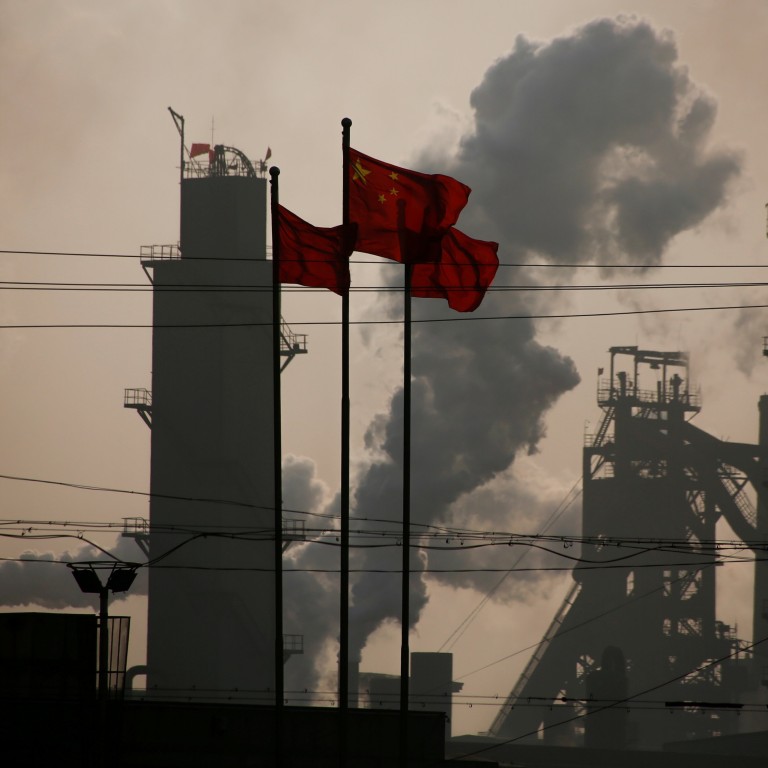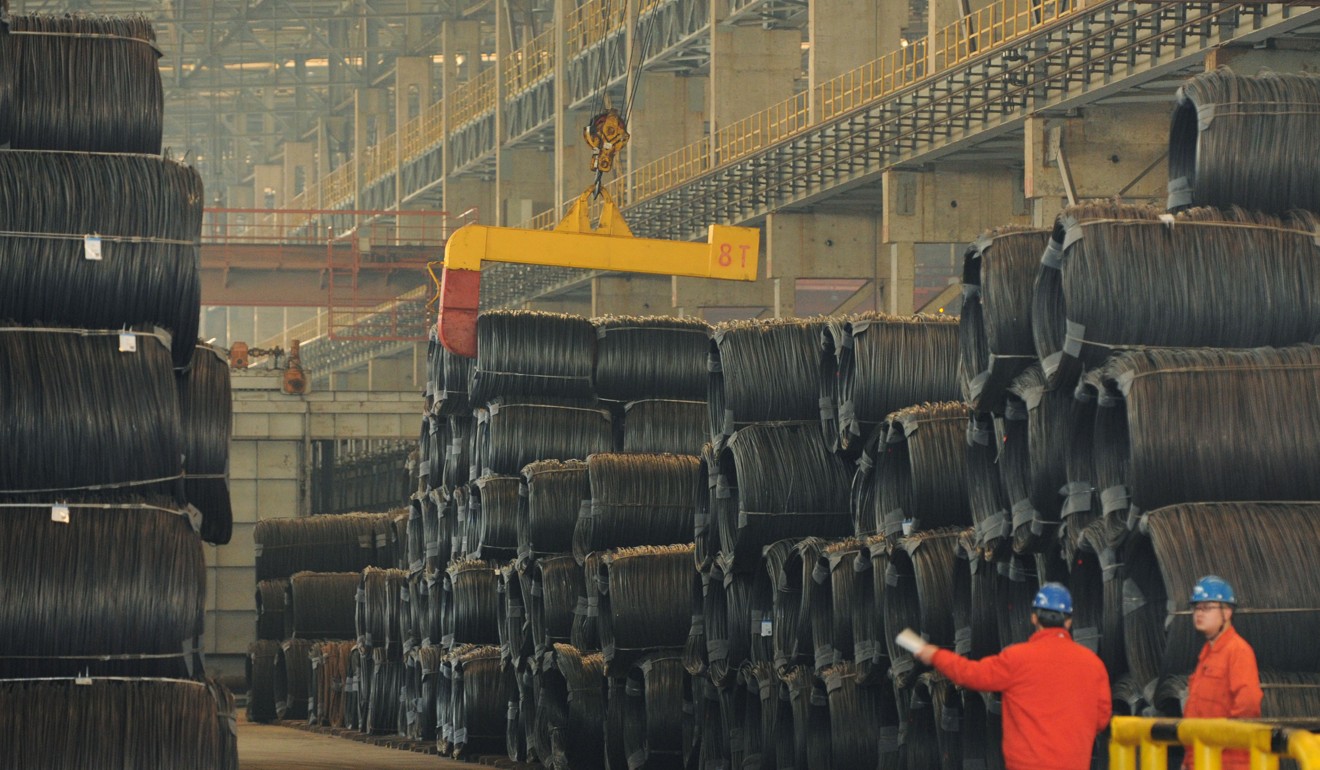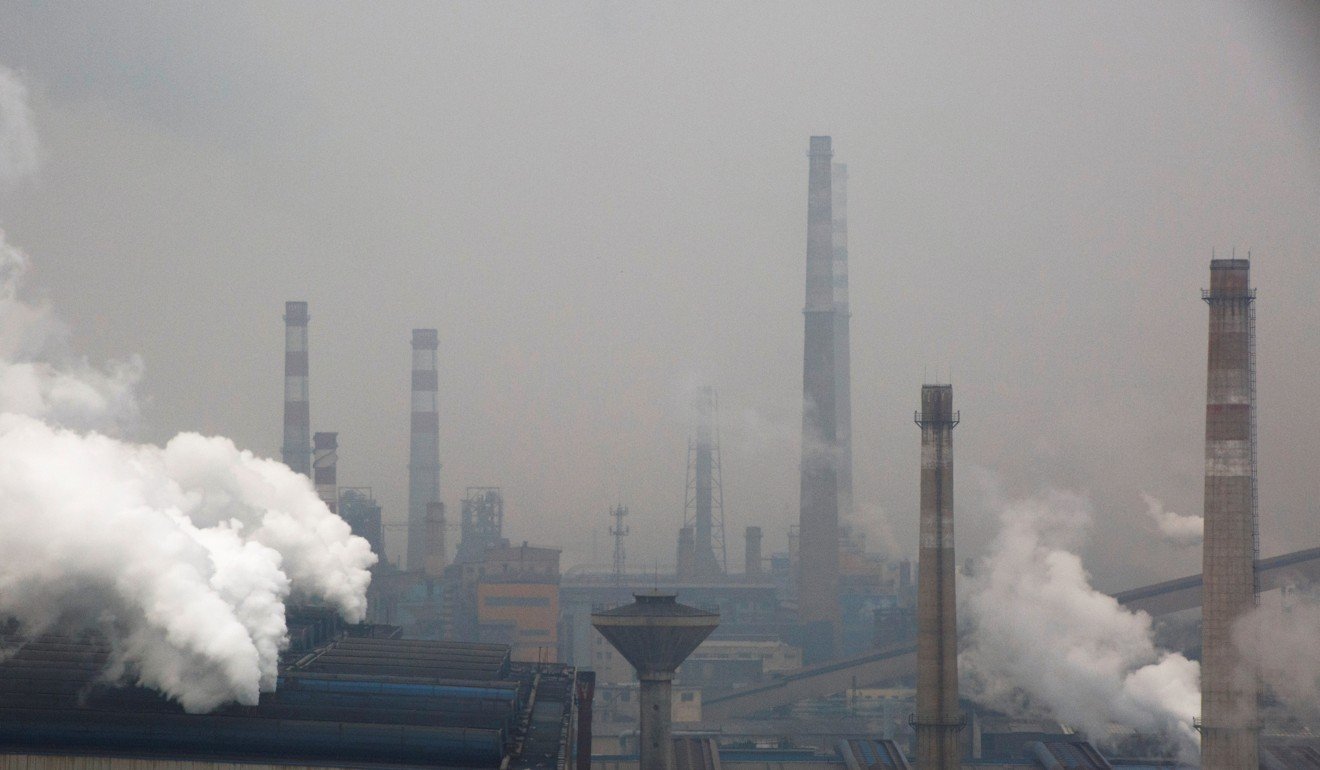
China targets steel industry as latest front in its war on pollution
- Steel plants are now biggest source of harmful emissions after strict curbs on coal plants came into force
- New measures will force producers to meet ultra-low emissions standards
China has shifted its focus in the battle for clean air to the steel industry after targeting coal-powered plants, the former top polluter, with similar measures.
On Sunday, the Ministry of Ecology and Environment and four other ministries released a joint directive intended to ensure steel mills in the country’s most polluted regions meet “ultra-low” emission standards by 2025.
The announcement cited a leading environmental scientist’s estimate that the measure could reduce particulate emissions in areas around Beijing and the Yangtze River Delta by around 20 per cent, and lower the concentration of PM2.5, the deadliest small particles, by as much as 9 per cent.
China is the world’s top steel producer. Last year its crude steel production reached 928.3 million tonnes, accounting for almost half of the world’s total production.
Production is highly concentrated in the northern Beijing-Tianjin-Hebei area, causing severe pollution in this region.

President Xi Jinping has highlighted the struggle to curb pollution as one of the “three critical battles” the country faces, along with eradicating poverty and curbing financial risk.
The biggest sources of emissions were coal-fired power plants and the steel sector, said Ma Jun, director of a Beijing-based NGO, the Institute of Public and Environmental Affairs.
But since 2014, existing power plants in China have been given tougher emission standards, while newly constructed power plants have had to meet the new standards since 2012.
This meant that by 2017 the steel sector replaced coal-fired power plants to become China’s biggest polluter in industrial sectors, according to He Kebin, dean of the school of environment at Tsinghua University in Beijing.
“In 2017, the emission of particulate matter in the steel sector was 2.81 million tonnes, making up 20 per cent of the total emissions of PM in China,” He wrote in an article cited in the environment ministry’s announcement.

Figures from the China Electricity Council indicate that in 2017 the electricity sector was producing 260,000 tonnes of particulate matter, 1.2 million tonnes of sulphur dioxide and 1.14 million tonnes of nitrogen dioxide. But the steel sector produced 2.81 million tonnes, 1.06 million tonnes and 1.72 million tonnes respectively.
According to the latest plan, steel plants much comply with ultra-low emission standards, which means that sinter plants will have to reduce emissions of particulate matter, sulphur dioxide and nitrogen oxide to 10, 35, and 50 milligrams per cubic metre respectively, as opposed to the current standards of 50, 200 and 300 mg/m3.
“The enforcement of the new standards will have a positive effect. In the long run, it’s beneficial for the industry,” Ma said.
The goal is for 60 per cent of steel mills in key regions to have completed the transformation by 2020, and 80 per cent of steel plants in the country to complete it by 2025.
Plants that complete the upgrades will receive more support on taxes, finance, and environmental protection policies.

According to He, in 2025, when the new standard will be completely enforced, emissions of sulphur dioxide, nitrogen oxides and particulate matter in the steel sector are forecast to fall by 61 per cent, 59 per cent and 81 per cent respectively.
But Ma said it was not enough to introduce the new standard because the “big challenge” was enforcement.
Last winter, his institute found more than 70 steel mills in China had exceeded existing emissions targets, but when they contacted those plants only three replied.
“If those plants can’t abide by lax regulations, how can they enforce the stricter one?” Ma asked.
He added that if small steel mills and coke plants could not reach the new standard, they might face the prospect of being shut down or laying off workers.
“It’s a painful process of survival of the fittest,” said Ma.

